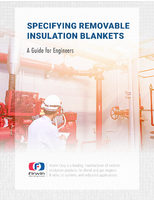Position Sensors / Detectors / Transducers
Delphi Planar Technology Gains Wide Acceptance
Share:
OE planar oxygen sensor technology allows upgrade for conical sensors on past models
Results in SKU consolidation that saves customers inventory dollars and space
LAS VEGAS, Nev. - Delphi, as one of only four Original Equipment (OE) manufacturers of oxygen sensors, has manufactured more than 250 million O2 sensors since 1974 and one out of every 10 vehicles globally carries a Delphi oxygen sensor. By leveraging this OE experience, Delphi is able to bring the latest available technology to the aftermarket and offer its customers the largest Planar O2 Sensors product line in the industry. More than 40 aftermarket customers have made the switch to Delphi Planar O2 Sensors and are benefiting from upgraded performance and intelligent SKU consolidation, which only Delphi offers, that lowers their inventory requirements and saves them money. The announcement was made today at a press conference held at the Automotive Aftermarket Products Expo (AAPEX) in Las Vegas.
"Delphi's a very strong player in the OE oxygen sensor market with share increases today in some of the fastest growing regions globally," said Ian Voce, global marketing director, independent aftermarket, Delphi Product & Service Solutions. "Delphi is utilizing some of the latest OE technologies to achieve this growth such as planar and its new linear sensing technology. We are pleased to be able to bring the current OE planar technology to the aftermarket for enhanced performance on past models."
Delphi's planar oxygen sensor technology delivers the industry's fastest light-off time (LOT), which puts the engine under fuel control operation quicker and can help save fuel and reduce harmful cold-start emissions by 40 percent to 50 percent. The sensors also have a unique multi-layer construction that provides a more durable element than competitors' parts.
"Delphi's replacement oxygen sensor line is built to meet the most stringent OE standards. They have been engineered and manufactured to outlast and outperform previous sensor designs," said Voce. "Another reason why our oxygen sensors are so durable is because of the way they are built. A patented protective sensor coating leads the industry in contamination resistance to silicone, phosphorous and other fuel/oil additives. Also, a unique multi-layer construction, made up of zirconia and alumina, makes our sensor elements stronger and more resilient to thermal shocks and engine vibration."
In addition, proprietary "dry to touch" anti-seize compound aids in faster, no mess installations. Of the 30+ tests Delphi puts its planar sensors through, 24 of them are for durability. The severe engine thermal stress test blasts the sensors with 930 degrees Celsius exhaust gases for most of the 1000-hour test duration. In addition, they are put through a test where they are heated with engine exhaust and then submerged in cold water - over and over again - every 5 minutes for 1000 hours. This kind of testing helps ensure that Delphi sensors can endure for the long haul, which helps eliminate comebacks for technicians. This extreme level of testing demonstrates the true value of OE not offered by aftermarket suppliers.
Learn more about Delphi oxygen sensors by visiting Delphi at AAPEX in booth #4830.
For more information about Delphi and its subsidiaries, visit Delphi's media room at http://www.delphi.com/media.
For more information contact:
Delphi
Carrie Wright
1.248.813.2932




